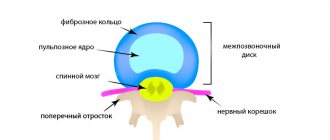Most patients who come to see a dentist require treatment for caries. Sometimes a person complains about other problems or asks to have his teeth fixed, but during an examination of the oral cavity, areas of destruction of enamel and dentin are discovered. Therefore, both dental alignment and prosthetics or implantation are often preceded by therapeutic procedures.
Stages of caries
- Initial (superficial, in the stain stage) - a white or brown round-shaped spot forms on the enamel. There is no pain or discomfort. The defect can only be noticed visually. A light color indicates an acute process, and a dark color indicates a chronic one.
- Medium (dentin damage) - the infection eats away the enamel, spreads to the dentin, and forms a cavity in it. Slight pain occurs when biting or applying heat to the tooth. The edges of the cavity are sharp and periodically crumble.
- Deep - the infection reaches the pulp, the tooth begins to disturb constantly, especially at night. The pain is intensified by temperature irritants and sweets. The attacks are strong, but short (last 5-10 seconds).
It is impossible to accurately determine the degree of caries by eye. The degree of damage can be diagnosed only by drilling the tooth. Often, externally, the lesion looks medium, but turns out to be deep, so only the estimated price of therapy is discussed with the doctor in advance.
Contraindications
- Acute stage of ARVI, acute respiratory infections, herpetic rashes
- I, III trimester of pregnancy
- Acute stage of periodontal disease
- Bruxism (night grinding of teeth)
- Seizure attacks
Indications
- Darkening of tooth cusps, cervical areas
- Chipping of a piece of tooth enamel
- Dark gap along the border of the filling
- “Dots”, “spots” on teeth
- Pain from sweet, sour, cold
Pros and cons of caries infiltration using the Icon method
Today, various types of caries treatment without a drill are used in many advanced clinics - both in Russia and around the world. The popularity of Icon proves that infiltration is a reliable and successful technology. In many ways, this is true, but there are experts who have a rather cool attitude towards this technique, pointing out some disadvantages. Some of them do not recommend the use of technology even with the slightest damage to dentin.
- Treatment of initial caries using the Icon system is a reliable and safe method.
- Maximum preservation of tooth tissue and strengthening of enamel structure.
- The patient does not feel pain and experiences discomfort.
- For people who are afraid of drills and injections, the innovative treatment of caries with the Icon system will be an excellent alternative.
- The procedure takes no more than half an hour.
- Suitable only for eliminating initial forms of caries.
- There is no 100% guarantee of protection against secondary caries (although this risk is minimal).
- The technique is not practiced in all clinics.
- If we consider the same clinical cases, then prices for Icon are on average 1,000 - 2,000 rubles higher than for installing a filling.
Diagnostics
In our clinic, caries diagnosis begins with an examination. The dentist carefully examines each tooth from the outside and inside, lightly tapping it (percussion). If a source of infection is detected, thermometry is performed - exposing the tooth to cold to assess the reaction. Electroodontometry helps determine the degree of infection development - the impact of a microcurrent on the tooth, to which the inflamed pulp will react. Patients are prescribed x-rays to assess the condition of the root tissues and detect hidden cavities.
What methods do dentists use to combat caries?
All methods of treating dental caries can be divided into two large groups - invasive and non-invasive. The first involves treating enamel caries without preparation. This option is most often used when the carious lesion is in its initial stage, there is no extensive damage to the deep tissues of the tooth, or there are indications for anesthesia.
Invasive technologies are used much more often and involve tooth preparation and removal of tissue affected by caries. The degree of preparation depends on how severely and deeply the tooth is affected.
The optimal treatment regimen and method is always selected by the dentist, taking into account age, individual characteristics, stage of disease development, anesthesia tolerance and other factors.
Stages of traditional caries treatment (using a drill)
- Anesthesia completely removes pain. At DHC, local anesthesia is performed with new generation drugs based on Articaine. The injections are completely safe, hypoallergenic, and have no restrictions or side effects.
- Tooth preparation - excision of carious tissues with a drill. It is necessary to remove all affected tissue, otherwise the infection will recur.
- Creation of a cavity with burs of different sizes with cooling so as not to overheat the pulp and dentin. Inside, the cavity is treated with etching gel to improve adhesion to the filling.
- Installation of a gasket - made on the basis of calcium hydroxide, normalizes blood circulation in the pulp, accelerates dentin regeneration. Spacers are needed when the cavity wall is located next to the pulp.
- Filling with photopolymer materials. Such fillings are durable, similar in color to enamel, and can withstand any load.
- Grinding - adjusting the filling height so that it does not interfere with the closure of the teeth and does not disturb the bite.
Icon treatment - indications and contraindications
When the infiltration technique appeared, many experts called the technology a small dental miracle, since it became possible to do without a drill. However, non-invasive caries treatment Icon is effective only in certain cases.
Indications
- The initial type of caries with depths E1, E2, D1 (where E1 is external damage to the enamel, D1 is one-third damage to dentin). However, some experts still do not recommend treating caries with Icon at a depth of D1.
- Dentophobia, fear of local anesthesia.
- Chalk spots after orthodontic treatment (removal of braces).
- Initial caries in hard-to-reach areas (especially in the interdental spaces).
Contraindications
- Treatment of caries without an Icon drill cannot be carried out in the advanced form of the disease, which has affected more than one third of the dentin.
- Cannot be used to combat enamel diseases (erosion, hypoplasia, etc.).
- The technology is contraindicated for the treatment of children under three years of age due to the presence of components that can damage overly sensitive enamel.
- In case of individual allergic reactions to materials and components.
Non-invasive methods for caries treatment (without drilling)
- Ozone therapy helps in the initial stages. Carious tissues are not removed mechanically; they are only treated for disinfection with ozone, which destroys 99.9% of bacteria. The procedure completely stops the development of the infection.
- ICON - infiltration of infection at the spot stage. The drug penetrates damaged enamel and makes it durable. The tooth surface becomes resistant to bacteria and organic acids.
- Laser therapy is similar to traditional therapy and is effective at all stages. It differs in that damaged tissue is not drilled out, but evaporated by a laser.
- Sandblasting (air abrasive) treatment is indicated for the treatment of initial caries. The sandblasting machine has the same principle of operation as a drill, but without vibration and contact effects on the enamel.
Icon and caries: how does it work?
The name Icon is an acronym for Infiltration Concept. This is a technology that was developed in Germany and in a short time gained popularity around the world. Treatment of caries using the Icon infiltration method occurs without the use of a drill, and this is its main innovative component. Using special tools and auxiliary solutions, a polymer solution is applied to the tooth, which hardens under the influence of ultraviolet radiation. It destroys pathogenic bacteria, seals the carious area and restores enamel density. In general, the infiltration system is a set that includes:
- Instruments (syringes and attachments for working with vestibular and proximal surfaces of teeth, interdental wedges);
- Icon-etch etching gel, which contains hydrochloric acid;
- Icon-Dry conditioner, used to dry the tooth after gel treatment;
- Infiltration material (treatment of caries without preparation Icon is based largely on its properties).
Complications after treatment
If the dentist overheats the dentin or injures the pulp during preparation, the tooth will begin to ache after the anesthesia wears off. We'll have to re-open it and depulp it. A lump may appear on the gum after unsuccessful canal sealing if the material penetrates beyond the root. Then you need to re-open the canal, treat the inflammation, then fill it again.
If the filling is in the way, it means that the dentist did not sharpen or polish it properly. This can be easily fixed. The appearance of a reaction to thermal changes indicates a violation of the tightness of the seal. All these complications often arise due to the fault of the dentist. To prevent them, you should carefully choose a clinic and trust only doctors with extensive experience.
High system efficiency
Patients prefer our dental clinic “Vivadent”, as it is one of the best clinics in Moscow, using the most modern, high-quality and effective methods for the prevention and treatment of teeth, tested by outstanding American and European specialists.
We employ highly qualified professionals with extensive experience. We constantly improve our knowledge and skills, study new treatment methods developed by world experts in the field of dentistry. It is very important for our clinic that every patient feels comfortable and receives painless treatment of the best quality at an affordable cost. You can find out more about the list of services and costs on our official website or from the clinic administrator.
Never forget that shining healthy teeth are our calling card, so everyone should visit the dentist regularly. This is the surest way to maintain a great smile for many years and avoid painful treatment.
Certificates
See all
Impeccable reputation
Numerous reviews from grateful VivaDent patients confirm the professionalism of our doctors
Preventive measures
The risk of developing dental caries cannot be completely eliminated. However, following certain medical recommendations can reduce the likelihood of tissue damage. Among them:
- high-quality and regular teeth cleaning. Not only the surface of the teeth, but also the tongue and cheeks should be cleaned of plaque;
- rinse your mouth after every meal. For these purposes, it is preferable to use special rinses;
- flossing after meals;
- balanced diet;
- giving up bad habits - smoking, drinking alcohol;
- reducing or eliminating the consumption of coffee and sweets;
- Regular visits to the dentist - at least once every 6 months.
By following these rules, you can significantly reduce the risk of rapid development of caries and tooth loss. After completing caries treatment, the patient must carefully monitor the condition of the oral cavity and adhere to all the dentist’s recommendations.








